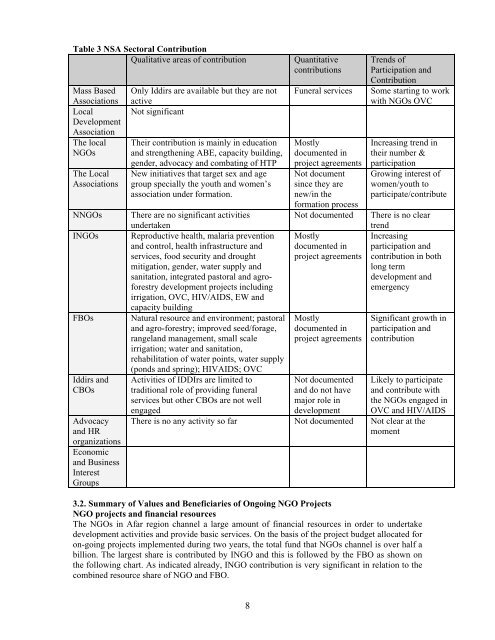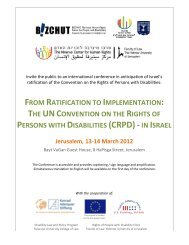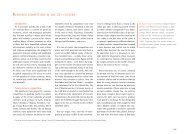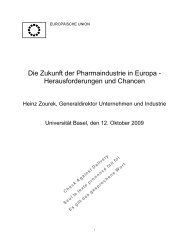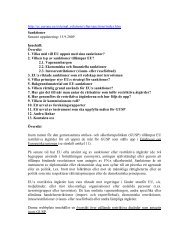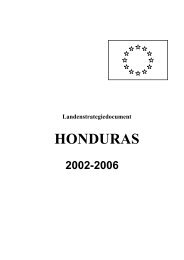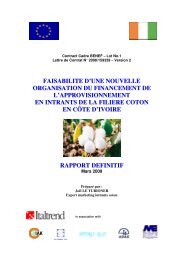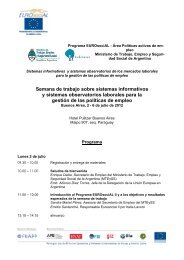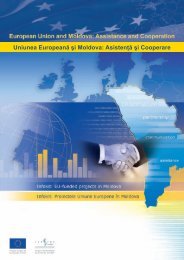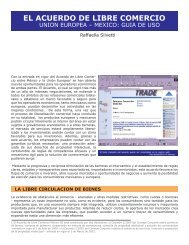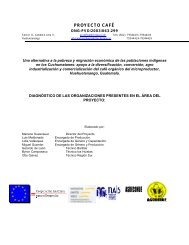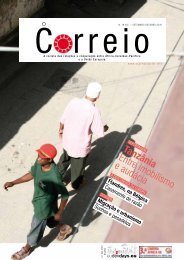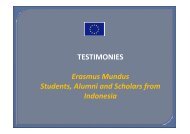Regional Reports - the European External Action Service
Regional Reports - the European External Action Service
Regional Reports - the European External Action Service
You also want an ePaper? Increase the reach of your titles
YUMPU automatically turns print PDFs into web optimized ePapers that Google loves.
Table 3 NSA Sectoral Contribution<br />
Qualitative areas of contribution Quantitative<br />
contributions<br />
Mass Based<br />
Associations<br />
Local<br />
Development<br />
Association<br />
The local<br />
NGOs<br />
The Local<br />
Associations<br />
Only Iddirs are available but <strong>the</strong>y are not<br />
active<br />
Not significant<br />
Their contribution is mainly in education<br />
and streng<strong>the</strong>ning ABE, capacity building,<br />
gender, advocacy and combating of HTP<br />
New initiatives that target sex and age<br />
group specially <strong>the</strong> youth and women’s<br />
association under formation.<br />
Trends of<br />
Participation and<br />
Contribution<br />
Funeral services Some starting to work<br />
with NGOs OVC<br />
Mostly<br />
documented in<br />
project agreements<br />
Not document<br />
since <strong>the</strong>y are<br />
new/in <strong>the</strong><br />
formation process<br />
Increasing trend in<br />
<strong>the</strong>ir number &<br />
participation<br />
Growing interest of<br />
women/youth to<br />
participate/contribute<br />
NNGOs There are no significant activities Not documented There is no clear<br />
undertaken<br />
trend<br />
INGOs Reproductive health, malaria prevention Mostly<br />
Increasing<br />
and control, health infrastructure and documented in participation and<br />
services, food security and drought project agreements contribution in both<br />
mitigation, gender, water supply and<br />
long term<br />
sanitation, integrated pastoral and agro-<br />
development and<br />
forestry development projects including<br />
irrigation, OVC, HIV/AIDS, EW and<br />
capacity building<br />
emergency<br />
FBOs Natural resource and environment; pastoral Mostly<br />
Significant growth in<br />
and agro-forestry; improved seed/forage, documented in participation and<br />
rangeland management, small scale<br />
irrigation; water and sanitation,<br />
rehabilitation of water points, water supply<br />
(ponds and spring); HIVAIDS; OVC<br />
project agreements contribution<br />
Iddirs and Activities of IDDIrs are limited to Not documented Likely to participate<br />
CBOs traditional role of providing funeral and do not have and contribute with<br />
services but o<strong>the</strong>r CBOs are not well major role in <strong>the</strong> NGOs engaged in<br />
engaged<br />
development OVC and HIV/AIDS<br />
Advocacy There is no any activity so far Not documented Not clear at <strong>the</strong><br />
and HR<br />
organizations<br />
Economic<br />
and Business<br />
Interest<br />
Groups<br />
moment<br />
3.2. Summary of Values and Beneficiaries of Ongoing NGO Projects<br />
NGO projects and financial resources<br />
The NGOs in Afar region channel a large amount of financial resources in order to undertake<br />
development activities and provide basic services. On <strong>the</strong> basis of <strong>the</strong> project budget allocated for<br />
on-going projects implemented during two years, <strong>the</strong> total fund that NGOs channel is over half a<br />
billion. The largest share is contributed by INGO and this is followed by <strong>the</strong> FBO as shown on<br />
<strong>the</strong> following chart. As indicated already, INGO contribution is very significant in relation to <strong>the</strong><br />
combined resource share of NGO and FBO.<br />
8


